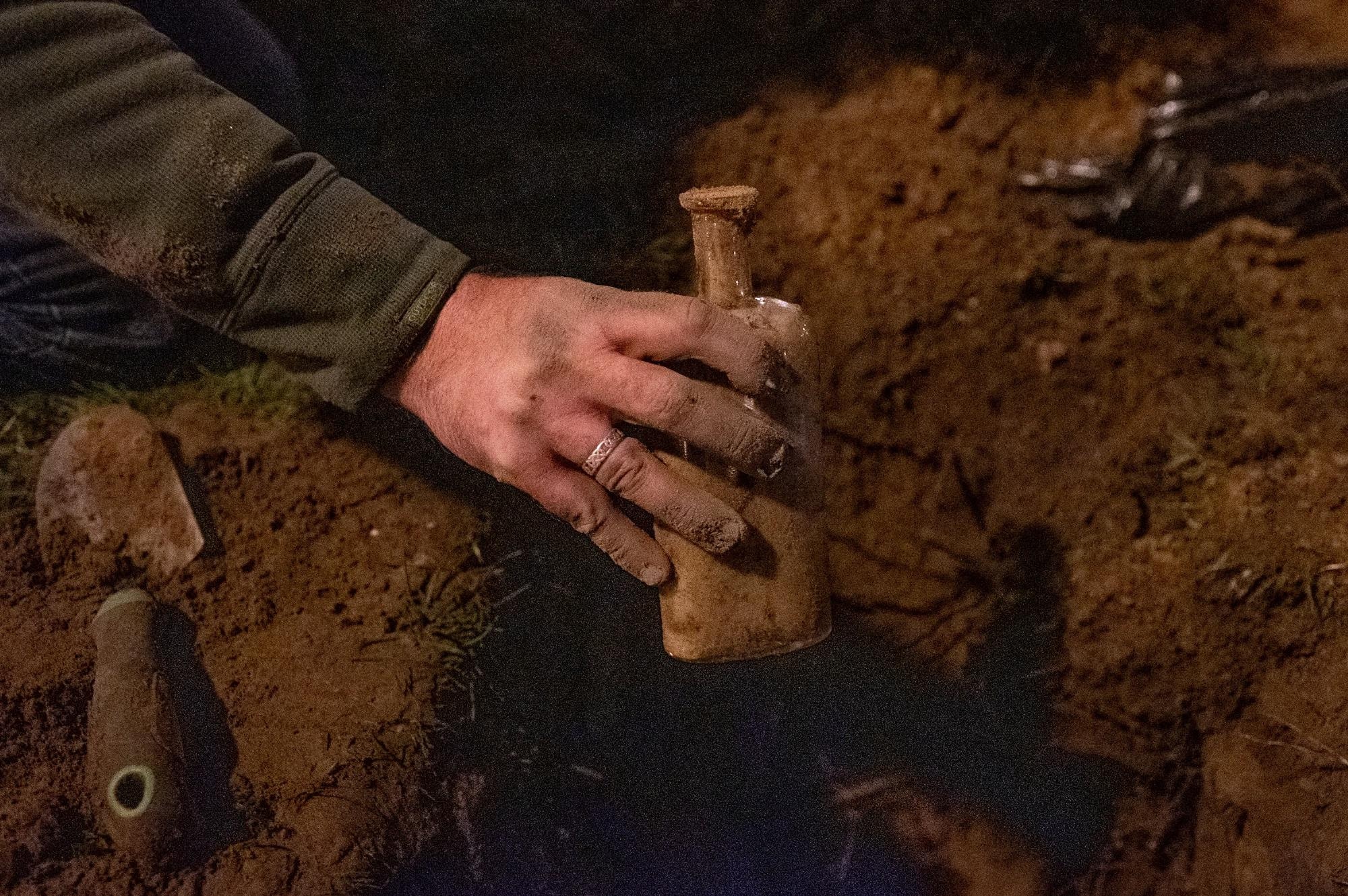Reviewed by Danielle Ellis, B.Sc.Nov 8 2023
In April of 2021, a clandestine gathering took place on the Michigan State University campus, where four plant scientists from the university unearthed a bottle filled with seeds that had been buried over 144 years ago by the renowned MSU botanist, William J. Beal.
 An excavated bottle of seeds is removed from the place it’s rested for the last 144 years. Image Credit: Derrick L. Turner.
An excavated bottle of seeds is removed from the place it’s rested for the last 144 years. Image Credit: Derrick L. Turner.
Jump ahead to 2023, over two years following the unearthing of the seeds from their concealed spot, molecular genetic analysis has definitively established the presence of a hybrid plant within the seed collection. This revelation would undoubtedly have astounded and amazed William J. Beal, given that DNA was an entirely unknown concept during his era.
Going Back to 1879
During his tenure at the university, Beal was driven by a desire to assist farmers in enhancing crop yields by eradicating weeds from their fields. His mission was to ascertain the longevity of undesirable plant seeds in soil.
He packed sand and 50 seeds from 23 weed species into 20 glass pint bottles. Beal buried the bottles with their mouths slanted downward to prevent water from accumulating, imitating as closely as possible the natural seed and soil conditions. Thus, the Beal Seed Experiment started.
Initially, Beal conducted excavations every five years to assess the seeds, observing their growth with each retrieval.
However, in 1920, a decision was made to extend the intervals to a decade, to prolong the study. Then, in 1980, the interval was further extended to 20 years. With four bottles still concealed in the ground, the experiment is set to continue until 2100.
In 2021, the current team of Beal researchers embarked on the excavation of the 14th bottle of seeds buried on campus. Their aim was to finally resolve the lingering question: What is the maximum duration that seeds can remain viable and capable of germination?
The biggest surprise to me is that the seeds germinated again. It’s amazing that something so old can still grow.”
Frank Telewski, Professor Emeritus, Plant Biologist and Beal Team Leader, Michigan State University
DNA Results ‘Ex-Seed’ Expectations
From April 2021 onward, the Beal experiment team, which comprises individuals such as Telewski, Lars Brudvig (a plant biology professor), Grace Fleming (an assistant professor of plant biology), and David Lowry (an associate professor of plant biology), has been engaged in the process of sequencing genomic DNA.
This groundbreaking effort marks the first instance in the history of the experiment where the identities of the plant species are being confirmed through DNA analysis.
Their findings have been documented and published in the American Journal of Botany. Despite previous suspicions that a hybrid plant might have inadvertently infiltrated the original seeds, it was only with the advent of advanced tools and technology that the team was finally able to confirm this long-held suspicion.
The molecular genetics work confirmed the phenotypes we saw, which is that the plants were Verbascum blattaria, ormoth mullein, and one hybrid of Verbascum blattariaand Verbascum thapsus, or common mullein. Beal stated that he included only Verbascum thapsusseeds, so some mix-up must have happened while the bottles were being prepared.”
Grace Fleming, Assistant Professor of Plant Biology, Michigan State University
According to Brudvig, although the majority of species within the Beal experiment lost their seed viability within the initial 60 years, the enduring vitality of Verbascum seeds offers valuable insights into the longevity of seeds under natural soil conditions.
In the 140-plus years since the experiment’s start, the question of seed bank longevity has gained new relevance, including for rare species conservation and ecosystem restoration; for example, prairie plantings on former farmland.”
Lars Brudvig, Professor of Plant Biology, Michigan State University
Brudvig added, “Our findings help to inform which plant species, like Verbascum, might be problematic weeds for a restoration project like this, and which other species may not, depending on how long a field was farmed before being restored.”
Beal’s Question Remains
Beal aspired to assist farmers in eradicating weeds by unraveling the longevity of seed viability. Even after 144 years, this question remains shrouded in uncertainty and awaits a conclusive answer.
The Beal experiment will ultimately end when we run out of bottles. If seeds germinate again from our next dig, we may need to consider extending the time between bottle extractions to every 30 years. It’s still a little early to put it on my calendar, but I am looking forward to seeing if we can wake up any more seeds in 2040.”
David Lowry, Associate Professor, Plant Biology, Michigan State University
Spartan scientists unearth Beal Seed Experiment
Video Credit: Michigan State University
Source:
Journal reference:
Fleming, M. B., et al. (2023) The 141-year period for Dr. Beal’s seed viability experiment: A hybrid surprise. American Journal of Botany. https://doi.org/10.1002/ajb2.16250.